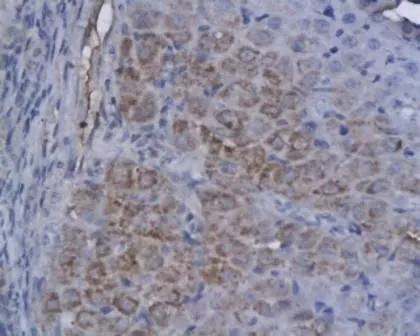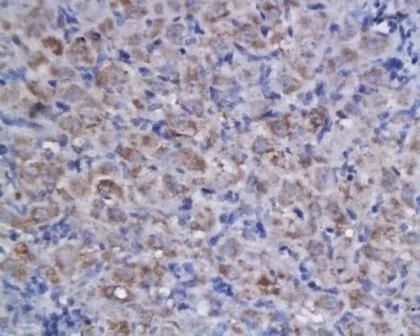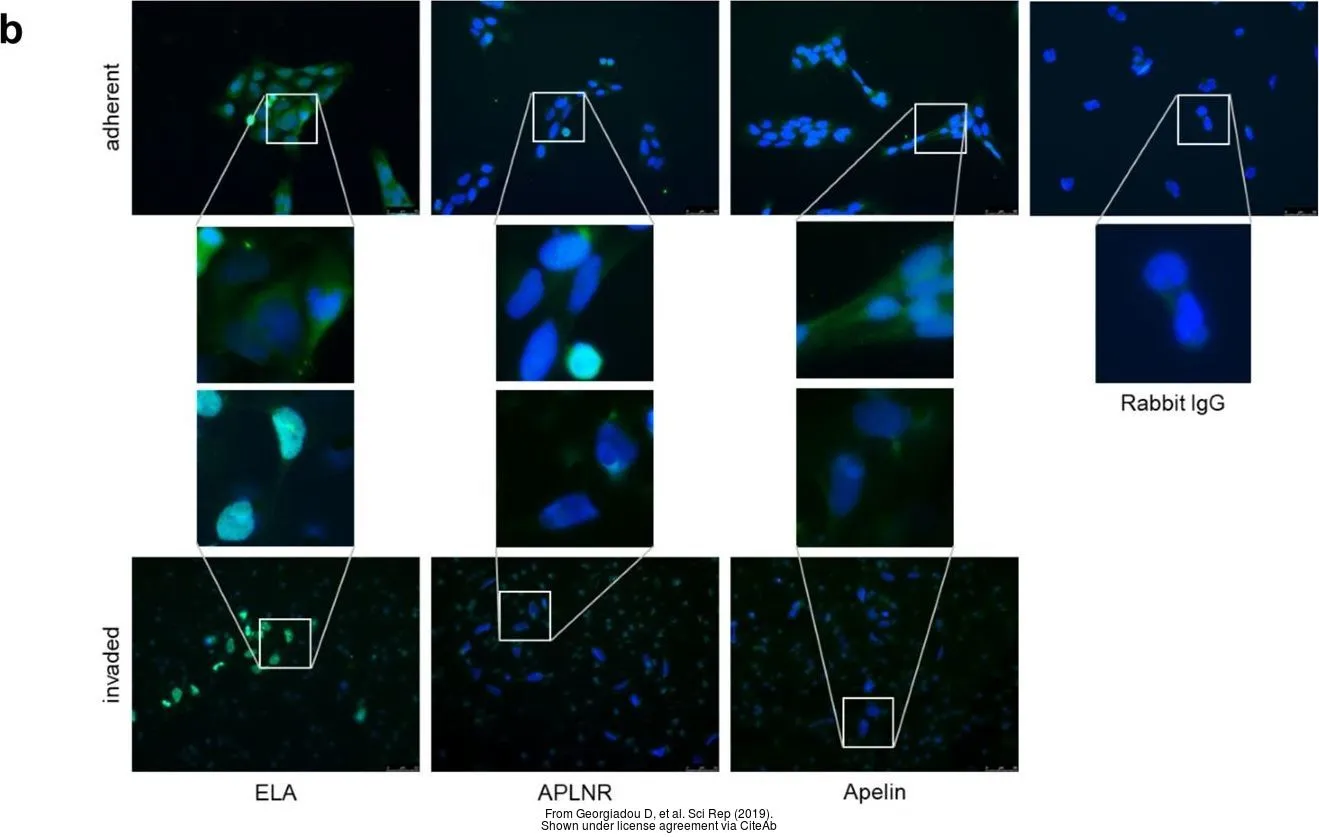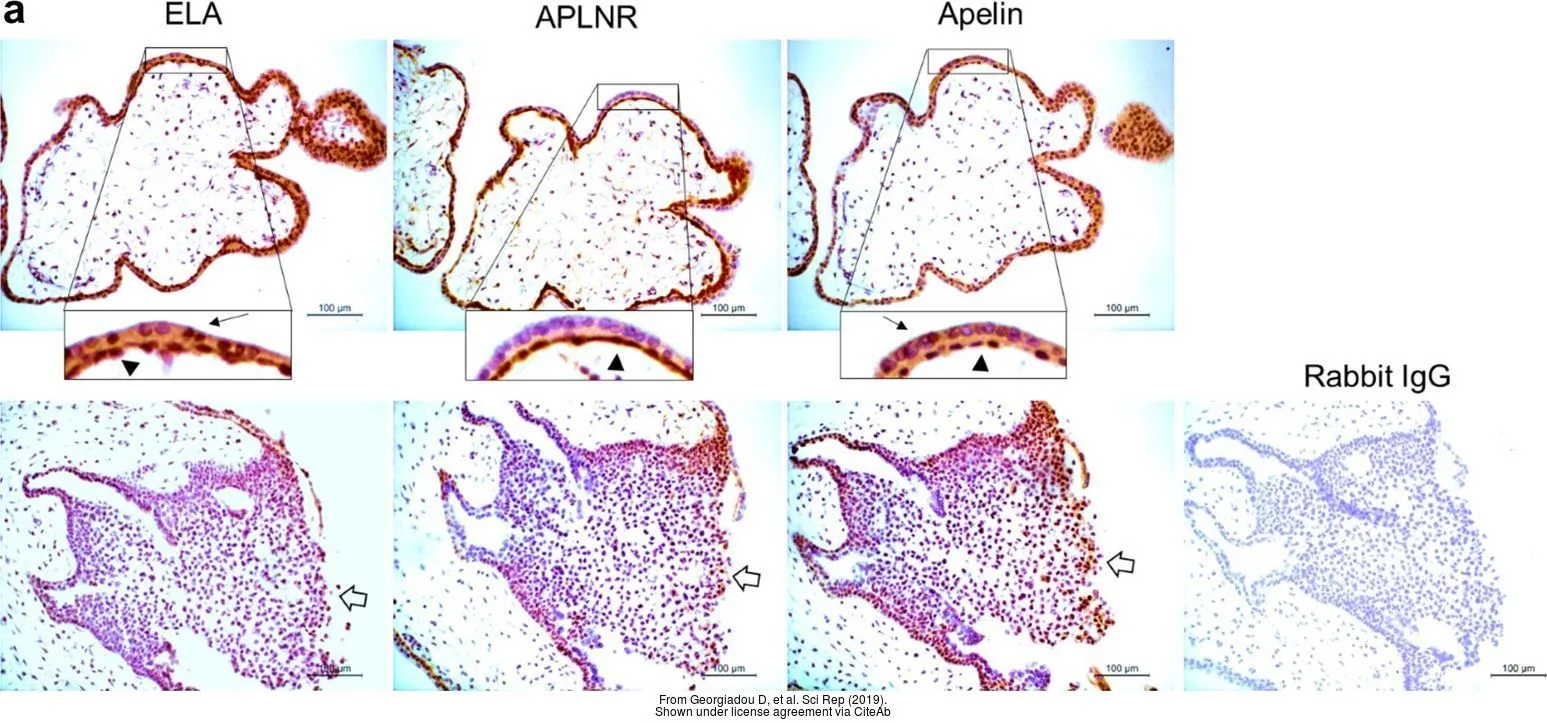
IHC-P analysis of rat ovary tissue using GTX37465 Apelin antibody.
Apelin antibody
GTX37465
ApplicationsImmunoFluorescence, ImmunoCytoChemistry, ImmunoHistoChemistry, ImmunoHistoChemistry Paraffin
Product group Antibodies
ReactivityHuman, Mouse, Rat
TargetAPLN
Overview
- SupplierGeneTex
- Product NameApelin antibody
- Delivery Days Customer9
- Application Supplier NoteIHC-P: 1:400-800. *Optimal dilutions/concentrations should be determined by the researcher.Not tested in other applications.
- ApplicationsImmunoFluorescence, ImmunoCytoChemistry, ImmunoHistoChemistry, ImmunoHistoChemistry Paraffin
- CertificationResearch Use Only
- ClonalityPolyclonal
- Concentration0.5 mg/ml
- ConjugateUnconjugated
- Gene ID8862
- Target nameAPLN
- Target descriptionapelin
- Target synonymsAGTRL1 ligand; APEL; apelin; APJ endogenous ligand; XNPEP2
- HostRabbit
- IsotypeIgG
- Protein IDQ9ULZ1
- Protein NameApelin
- Scientific DescriptionThis gene encodes a peptide that functions as an endogenous ligand for the G-protein coupled apelin receptor. The encoded preproprotein is proteolytically processed into biologically active C-terminal peptide fragments. These peptide fragments activate different tissue specific signaling pathways that regulate diverse biological functions including fluid homeostasis, cardiovascular function and insulin secretion. This protein also functions as a coreceptor for the human immunodeficiency virus 1. [provided by RefSeq, Feb 2016]
- ReactivityHuman, Mouse, Rat
- Storage Instruction-20°C or -80°C,2°C to 8°C
- UNSPSC12352203
References
- Cardioprotective effect of electroacupuncture in cardiopulmonary bypass through apelin/APJ signaling. Wang K et al., 2020 Feb 1, Life SciRead more
- Peptide hormone ELABELA enhances extravillous trophoblast differentiation, but placenta is not the major source of circulating ELABELA in pregnancy. Georgiadou D et al., 2019 Dec 13, Sci RepRead more
- Apelin promotes hepatic fibrosis through ERK signaling in LX-2 cells. Wang Y et al., 2019 Oct, Mol Cell BiochemRead more
- The mechanism of all-trans retinoic acid in the regulation of apelin expression in vascular endothelial cells. Shi H et al., 2017 Dec 22, Biosci RepRead more



